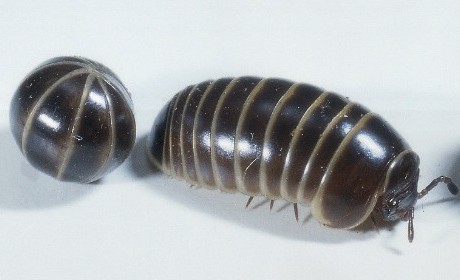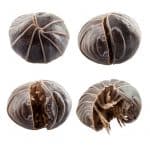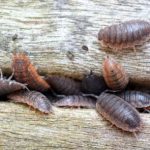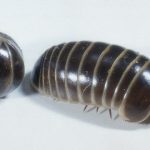Votre panier est actuellement vide !

The woodlouse
In fact, the woodlouse is not an insect, it is a crustacean, like shrimps or lobsters.It is the only one that can live on land.It is rather gray and oval and it rolls up in a ball when it is threatened.Its body has 3 parts: the head, the thorax and the abdomen.Its whole body is segmented and armored.The adult woodlouse is about 13 mm.It has no wings and has seven pairs of legs.
Latin Name: Armadillidium vulgare
Description:In fact, the woodlouse is not an insect, it is a crustacean,like shrimp or lobsters.It is the only one that can live on land.It is rather gray and oval and rolls in a ball when threatened.Its body has 3 parts: the head, the thorax and the abdomen.Its entire body is segmented and armored.The adult woodlouse is about 13 mm. It has no wings and has seven pairs of legs.
Reproduction:When the female woodlouse is fecund, she lays her eggs in capsules and deposits them in cracks.Some species of woodlice carry their eggs in a ventral pouch, a bit like kangaroos.We can find from 2 to 1000 eggs in the capsules,it varies depending on species. The woodlouse must undergo several molts before reaching its adult state.It lives from one to two years.
Habits:The woodlouse lives in dark and damp places, and feeds on decaying organic matter.In nature, it is found under stones, logs, piles of dead leaves and under objects that are directly on the ground. They are also found in homes, in damp places.They live at night and enter homes through cracks in exterior walls and poorly sealed door bottoms.
Prevention:The woodlouse is not harmful, it helps to decompose plants and does not damage gardens. It does not attack the healthy wood either.To reduce the quantity or eliminate the sowbugs, simply eliminate the shelterswhere they hide. (piles of leaves, logs, boards etc.). To prevent them from proliferating in homes, block cracks in exterior walls, correct plumbing problems and make the environment drier. Finally, treatments can be applied but should be administered by specialists to ensure that all sources of infestation are treated.


